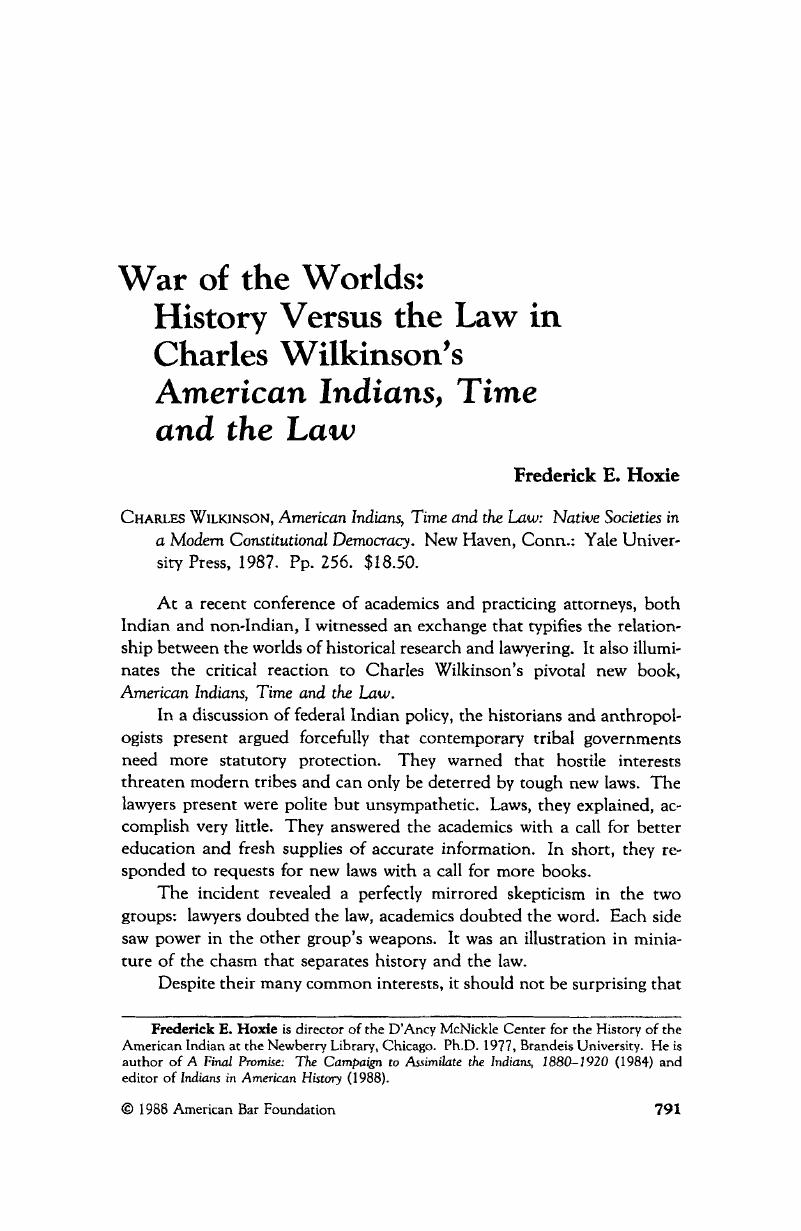No CrossRef data available.
Published online by Cambridge University Press: 27 December 2018

1 For a discussion of Cohen and his influence, see Feldman, Stephen M., “Felix S. Cohen and His Jurisprudence: Reflections on Federal Indian Law,” 35 Buffalo L. Rev. 479–525 (1986). The most recent revision of Cohen's Handbook (Wilkinson served as Man-aging Editor of the project) appeared in 1982; Felix Cohen, Handbook of Federal Indian Law (Charlottesville, Va.: Michie Bobbs Merrill, 1982).Google Scholar
2 Robert, H. Keller Jr., Review of American Indians, Time and the Law, 74 J. Am. Hist. 492, and Burt, Larry, Review of American Indians, Time and the Law. 93 Am. Hist. Rev. 530 (1988).Google Scholar
3 See Dirk Johnson, “Indian Fishing Dispute Upsets North Woods' Quiet,”N.Y. Times, Apr. 24, 1988, at 12.Google Scholar
4 Clifton, James A., “The Political Rhetoric of Indian History: A Review Essay,” 49 Ann. Iowa 102, 103 (1987).Google Scholar
5 Milner S. Ball, “Constitution, Court, Indian Tribes,” 1987 ABF Res. J. 1–140.Google Scholar
6 Id. at 20, 138, 137.Google Scholar
7 105 S. Ct. 2451 (1985), quoted in Ball at 20.Google Scholar
8 The Montana Court is quoted in Wilkinson at 27.Google Scholar
9 Ball, 1987 ABF Res. J. at 46.CrossRefGoogle Scholar
10 Id. at 10.Google Scholar
11 Id. at 39.Google Scholar
12 Clifton, 49 Ann. Iowa at 104 (cited in note 4).Google Scholar
13 For a discussion of the viability and potential of contemporary tribal governments (one of the few questions listed here that historians have examined), see Kenneth R. Philip, ed., Indian Self Rule: First Hand Accounts of Indian White Relations from Roosevelt to Reagan (Salt Lake City: Howe Bros., 1986), esp. at 239; and Tom Holm, “The Crisis in Tribal Government,” in Vine Deloria, Jr., ed., American Indian Policy in the Twentieth Century (Norman: University of Oklahoma Press, 1985).Google Scholar